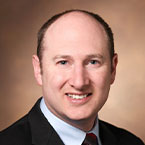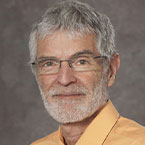By: Alex B. Diamond, DO, MPH, FAAP, FAMSSM & Stuart Berger, MD, FAAP
Did you know
sudden cardiac arrest is the main cause of death in young athletes? This fact may be surprising. But it has prompted 40 states to require cariopulminary resuscitation (CPR) training for all high school students before graduation. In addition, many states now require automated external defibrillators (AEDs) in schools.
Here's how prompt use of CPR and AEDs in schools can save lives.
What happens with sudden cardiac arrest?
Sudden cardiac arrest (SCA) is when the heart suddenly stops beating. It can cause death within minutes.
Certain conditions can lead to SCA, but not all the causes are known.
SCA is rare in young people. When it happens, it's often to
young athletes during competition or practice. But SCA can happen at any time to any young person, even if they aren't in sports.
Why CPR and AEDs are critical in schools
When a person's heart stops beating, quick action can mean the difference between life or death. CPR and AEDs save lives.
An automated external defibrillator (AED) checks the heart rhythm. If needed, it sends a shock that will get the rhythm back to normal. It won't shock a person if they don't need it.
According to the American Heart Association, about 9 in 10 people who get a shock from an AED within the first minute of cardiac arrest live. For every minute that passes in cardiac arrest, the chance of survival goes down by 10%.
The American Academy of Pediatrics
advises all schools to place AEDs both inside and outside on school grounds as part of a
Cardiac Emergency Response Plan. It should take no more than two minutes to get an AED and return to the victim.
At least 20 states plus the District of Columbia require AEDs to be in all public schools. In California, schools that offer sports must supply AEDs too.
Even if your state doesn't mandate AEDs, you can still be an advocate for getting them at your school. Having AEDs available may just save someone's life.
Though using an AED may seem intimidating, it will tell you if a shock is needed or not. You can even take a hospital or community CPR class to learn more about how to do CPR and how to use an AED.
Sudden cardiac arrest symptoms
Some young people may not have symptoms of heart problems until the SCA occurs.
Others may experience heart-related symptoms before SCA such as:
These symptoms could mean that there is serious underlying heart condition.
Screening all kids for potential heart-related problems
The American Academy of Pediatrics (AAP) recommends that pediatricians should screen all kids for heart-related issues, not just athletes. This screening could help identify conditions that can lead to sudden cardiac arrest.
The AAP also recommends that all kids—from middle school to college age—have an annual
sports physical. This can be scheduled alongside their yearly
well-child visit with their pediatrician. Even if your child isn't playing organized sports, they will benefit from this thorough exam, which examines heart health.
Of course, if you or your child have any concerns about their heart health, see your pediatrician or a
pediatric cardiologist.
More information
About Dr. Diamond
 Alex B. Diamond, DO, MPH, FAAP, FAMSSM, a member of the American Academy of Pediatrics Council on Sports Medicine & Fitness, is an Associate Professor of Orthopaedic Surgery, Pediatrics and Neurological Surgery at Vanderbilt University Medical Center. He is also Director of the Vanderbilt Youth Sports Center and Team Physician for the Vanderbilt University and the Nashville Predators. Alex B. Diamond, DO, MPH, FAAP, FAMSSM, a member of the American Academy of Pediatrics Council on Sports Medicine & Fitness, is an Associate Professor of Orthopaedic Surgery, Pediatrics and Neurological Surgery at Vanderbilt University Medical Center. He is also Director of the Vanderbilt Youth Sports Center and Team Physician for the Vanderbilt University and the Nashville Predators.
|
About Dr. Berger Stuart Berger, MD, FAAP, Chair of the American Academy of Pediatrics Section on Cardiology & Cardiac Surgery, is Division Head of pediatric cardiology and Lurie Children's Hospital. Stuart Berger, MD, FAAP, Chair of the American Academy of Pediatrics Section on Cardiology & Cardiac Surgery, is Division Head of pediatric cardiology and Lurie Children's Hospital.
|